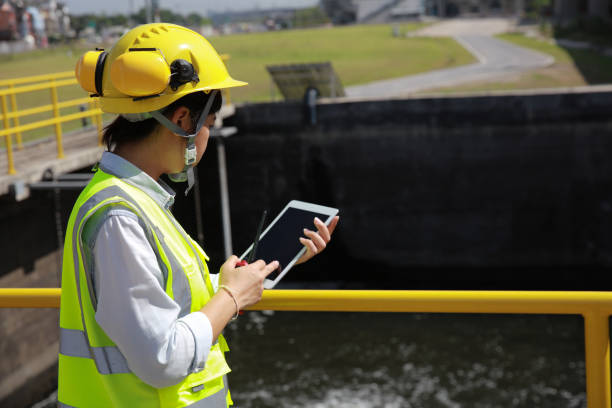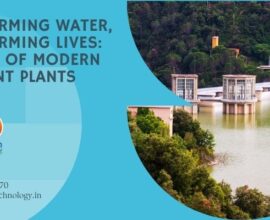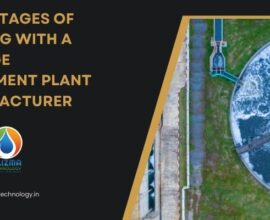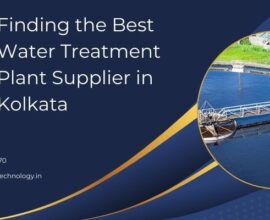Ever wondered what happens to industrial wastewater before it re-enters the environment? Behind the scenes, a network of innovators and engineers work tirelessly to make that water safe again. This is where an effluent treatment plant manufacturer plays a crucial role-turning waste into sustainability, and pollution into purity.
Why Effluent Treatment Plants Matter More Than Ever
Industries—whether textile, chemical, pharmaceutical, or food processing—produce massive volumes of wastewater laden with harmful chemicals and suspended solids. Without proper treatment, this effluent can severely damage aquatic life, contaminate soil, and even affect public health. According to the U.S. Environmental Protection Agency (EPA), untreated wastewater contributes to nearly 80% of water pollution in developing regions. That’s where efficient treatment systems step in to make a measurable difference.
Effluent Treatment Plants (ETPs) are not just machines-they are the backbone of industrial sustainability. They cleanse wastewater through a series of physical, chemical, and biological processes, ensuring compliance with local discharge norms and international environmental standards.
How ETP Manufacturers Are Redefining Wastewater Management
Gone are the days when treatment plants were bulky, inefficient, and expensive to maintain. Modern manufacturers focus on innovation, compact design, and automation. Let’s break down what today’s best ETP providers bring to the table:
- Customized Solutions: Every industry’s wastewater is different. Advanced manufacturers now design tailored ETP systems that match specific contaminants and output goals.
- Energy Efficiency: The latest plants incorporate low-energy motors, smart sensors, and recycling loops to cut operational costs and carbon footprints.
- Zero Liquid Discharge (ZLD): Increasingly popular in water-scarce regions, ZLD systems ensure that no water goes to waste—every drop is recovered, reused, or safely evaporated.
Core Stages in an Effluent Treatment Plant
Understanding how ETPs work can help industries appreciate the science behind sustainability. The process generally unfolds in the following stages:
- Preliminary Treatment: Removal of large solids, debris, and grit to protect downstream equipment.
- Primary Treatment: Use of sedimentation and coagulation to separate suspended solids and oils.
- Secondary Treatment: Biological processes using microorganisms to break down organic pollutants.
- Tertiary Treatment: Advanced filtration, disinfection, and polishing to achieve safe discharge or reuse standards.
What to Look for in a Reliable ETP Manufacturer
Choosing the right manufacturer can make or break your wastewater management strategy. Here’s what experts recommend you consider:
- Proven Industry Experience: Work with companies that have demonstrated success across multiple sectors.
- Compliance Expertise: A good manufacturer should ensure your system meets both local and global regulatory standards like CPCB (India), EPA (USA), or ISO certifications.
- After-Sales Support: ETPs need regular maintenance, so round-the-clock service and spare part availability are key.
- Automation & IoT Integration: Look for smart systems that can monitor parameters in real-time for better efficiency.
Some leading manufacturers also offer modular ETP designs-easy to install, expand, and transport. This makes them ideal for small and medium enterprises (SMEs) that want scalable solutions without heavy upfront investment.
ETP Industry Trends Shaping the Future
The global water treatment industry is evolving fast. With climate change and industrialization accelerating, manufacturers are turning toward innovation-driven sustainability. Key trends include:
- AI-Driven Monitoring: Artificial intelligence now helps predict system inefficiencies before they cause breakdowns.
- Green Chemistry: Replacing harmful coagulants and flocculants with biodegradable alternatives.
- Decentralized Treatment Units: Portable and containerized ETPs that serve remote or mobile industrial sites.
According to a report by Grand View Research, the global water and wastewater treatment market is expected to reach over USD 890 billion by 2030. This highlights not just demand, but an increasing commitment to responsible industrial growth.
Frequently Asked Questions (FAQ)
1. What is the main purpose of an Effluent Treatment Plant?
Its primary goal is to treat industrial wastewater and make it safe for discharge or reuse, protecting both the environment and human health.
2. Which industries need ETP systems?
Industries like textiles, tanneries, food processing, chemicals, pharmaceuticals, and metal finishing all require ETP systems to manage effluents safely.
3. How often should an ETP be maintained?
Routine maintenance should be carried out monthly, with detailed inspections quarterly. Regular upkeep ensures optimal performance and longevity.
4. Can treated water from an ETP be reused?
Yes. Depending on the treatment level, the water can be reused for gardening, cooling systems, or even certain industrial processes, contributing to water conservation.
Final Thoughts
In an age where sustainability defines success, effluent treatment plants are more than compliance tools-they are the guardians of our environment. Partnering with an experienced and innovative ETP manufacturer can help industries balance productivity with responsibility. After all, clean water isn’t just a resource-it’s our shared legacy.





